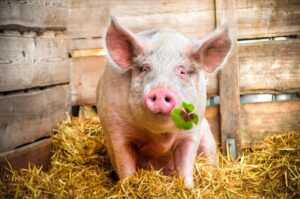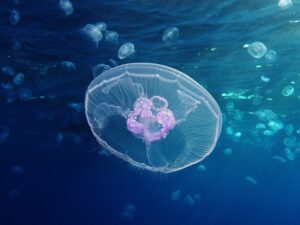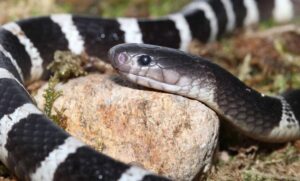The natural world is truly vast and full of surprises. Some animals, although not birds, can glide and fly with remarkable skill. In this article, KnowAllAnimals will explore the Top 5 Flying Animals That Are Not Birds, highlighting some of the most fascinating creatures that can fly without wings.
1. Top 5 Flying Animals That Are Not Birds – Amazing Gliders of Nature
Birds aren’t the only animals that can soar through the sky. In nature, many other creatures possess the ability to glide through the air. Let’s explore five flying animals that are not birds, yet they will astound you with their incredible aerial skills.
1.1. Mobula Ray
- Kingdom: Animalia
- Phylum: Chordata
- Class: Chondrichthyes
- Subclass: Elasmobranchii
- Order: Myliobatiformes
- Family: Mobulidae
- Genus: Mobula Rafinesque, 1810
The Mobula Ray is a genus of ray in the family Myliobatidae (eagle rays), part of the order Myliobatidae. You might be surprised to learn that this fish can leap up to 2 meters (6.5 feet) out of the water like a bird. These rays can have a wingspan of up to 5.2 meters (17 feet) and weigh up to 1 ton.
According to scientists, mobula rays live in a small range and have a low reproduction rate. This forces them into fierce competition to sustain their species. During the mating season, mobula rays gather in large schools, and at this time, the males will try to attract females. To impress a mate, male rays will launch themselves as high as possible out of the water, spread their “wings,” and perform acrobatics to make a spectacular splash and create the loudest possible sound upon impact.
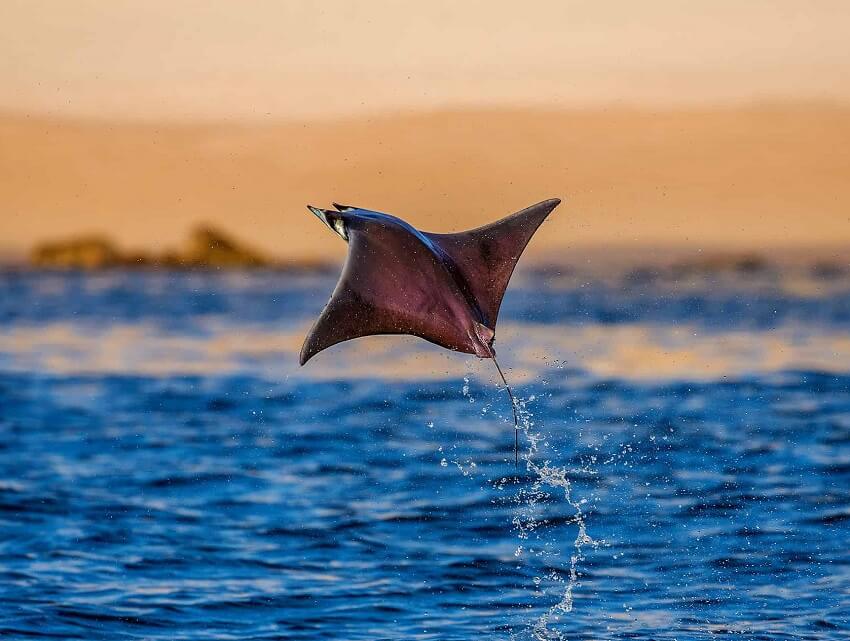
1.2. Flying Snake
- Kingdom: Animalia
- Phylum: Chordata
- Class: Reptilia
- Order: Squamata
- Suborder: Serpentes
- Family: Colubridae
- Subfamily: Ahaetuliinae
- Genus: Chrysopelea Boie, 1826
The Flying Snake (Chrysopelea) is a genus of snake in the subfamily Ahaetuliinae of the family Colubridae. They are a group of tree-dwelling snakes found from Southeast Asia (including Vietnam, Laos, and Cambodia) to South Asia. Flying snakes primarily live in treetops, where they launch themselves from branches to escape predators or hunt prey. They can glide for a distance of up to 24 meters (78 feet).
Jake Socha, a biologist at Virginia Tech, says that flying snakes have a special body structure that allows them to flatten themselves as they hurl through the air. They also know how to tilt from side to side to catch the wind, creating lift to fight against gravity. Flying snakes can glide at a speed of 8 to 10 meters (26 to 33 feet) per second.
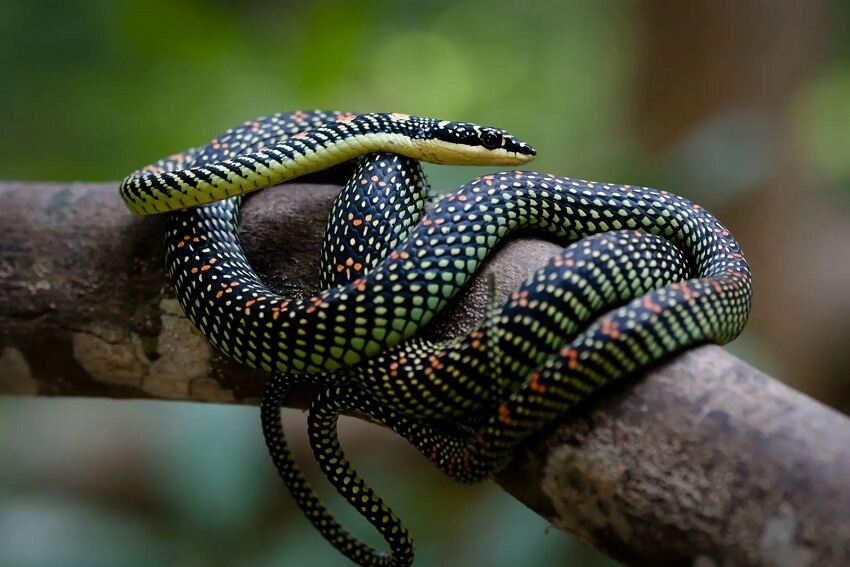
1.3. Flying Squid
- Kingdom: Animalia
- Phylum: Mollusca
- Class: Cephalopoda
- Order: Oegopsida
- Family: Ommastrephidae
- Genus: Todarodes
- Species: T. pacificus
The Flying Squid (Todarodes pacificus) belongs to the family Ommastrephidae. They live in the North Pacific Ocean, around the seas of Japan, China, and Russia, and south of the coasts of Alaska and Canada. They are also found in central Vietnam. Flying squid are blue, about 20 cm (8 inches) long, and can fly up to 30 meters (98 feet) over the water’s surface to escape predators or conserve energy during migration.
Flying squid have two fins and a siphon that they use to take in water from one side and forcefully expel it from the other. This is also their flight mechanism. They fly backward with their tentacles trailing, and their fins act like wings, helping them stay balanced in the air.
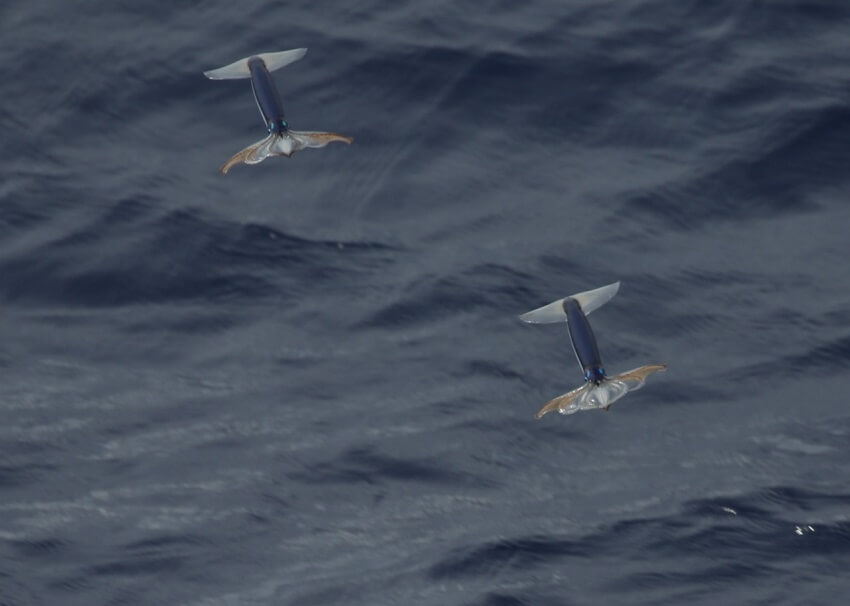
1.4. Flying Frog
The Flying Frog is a species of tree frog in the family Rhacophoridae. They are found in China, Indonesia, Laos, Malaysia, Thailand, and Vietnam, and possibly in Brunei and Myanmar. Thanks to their very strong limbs, webbed feet, large foot membranes, and broad skin folds on their arms, flying frogs can glide easily and land softly from high trees, or soar from one tree to another without being harmed.
They are quite large, with males measuring 72.3–85.5 mm (2.8–3.4 inches) and females 89.4–90.7 mm (3.5–3.6 inches). The colors of both sexes are similar. The appearance of flying frogs often matches their habitat and they can change colors. Species living in tropical regions are usually brightly colored, while those in temperate climates are darker.
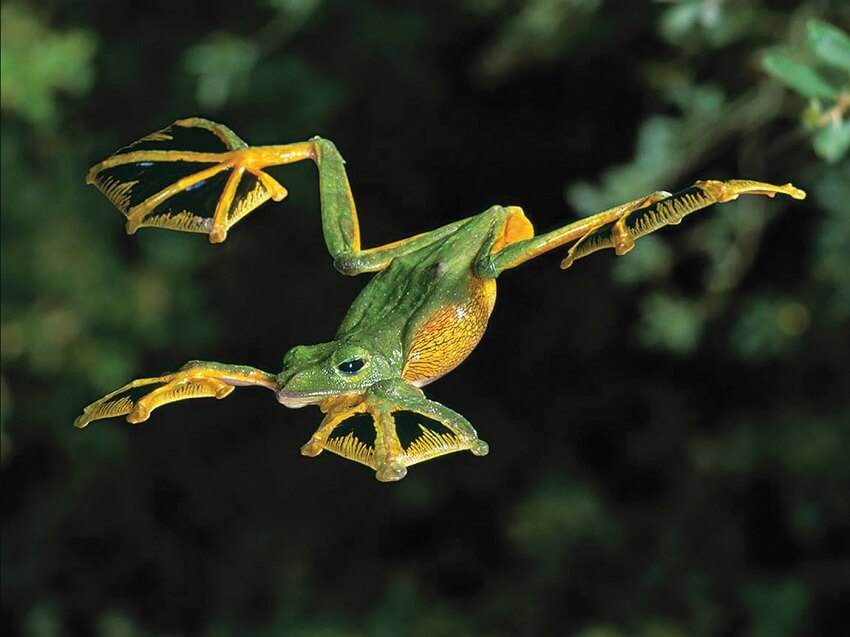
1.5. Sugar Glider
- Kingdom: Animalia
- Phylum: Chordata
- Class: Mammalia
- Infraclass: Marsupialia
- Order: Diprotodontia
- Family: Petauridae
- Genus: Petaurus
- Species: P. breviceps
The Sugar Glider is a small marsupial native to Australia and New Guinea. Its body structure allows it to move easily from tree to tree. It has a thin membrane of skin stretching along its sides that acts like a parachute. Thanks to this delicate membrane, the sugar glider can glide for 60-100 meters (200-330 feet) in just a few seconds. However, they cannot take off from the ground; they must launch themselves from a high tree.
Sugar gliders typically hide in their nests during the day and come out at night to forage and play. They spend most of their time sleeping. Sugar gliders have soft, grayish-blue fur and a light, small body. In the wild, they can almost completely blend in with their natural environment, such as leaves and branches, making them very difficult to spot with the naked eye.
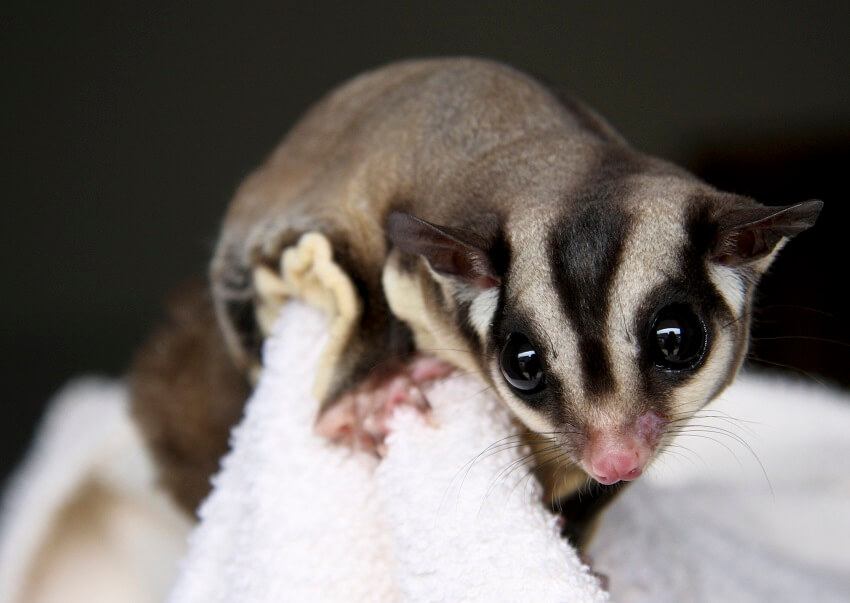
2. FAQs
1. Which non-bird animal can glide the farthest?
👉 The Sugar Glider can glide through the air for over 150 meters (492 feet) thanks to the special membrane of skin between its limbs.
2. Can fish really “fly” above the water?
👉 Yes, the Flying Fish is a prime example. They can launch themselves out of the water and glide through the air to escape predators.
3. What reptile can glide in the air?
👉 The Draco Lizard has skin flaps on its sides that allow it to glide from tree to tree.
4. Do these flying animals have actual wings?
👉 Most of them don’t have true wings. They use skin membranes or special body structures to glide through the air.
The animal kingdom is full of wonders, and the ability to fly isn’t just for birds. From the sugar glider to the flying fish and the draco lizard, each species has a unique way of conquering the sky. Exploring these “Flying Animals That Are Not Birds” helps us appreciate nature more and understand that evolution always finds surprising paths.

